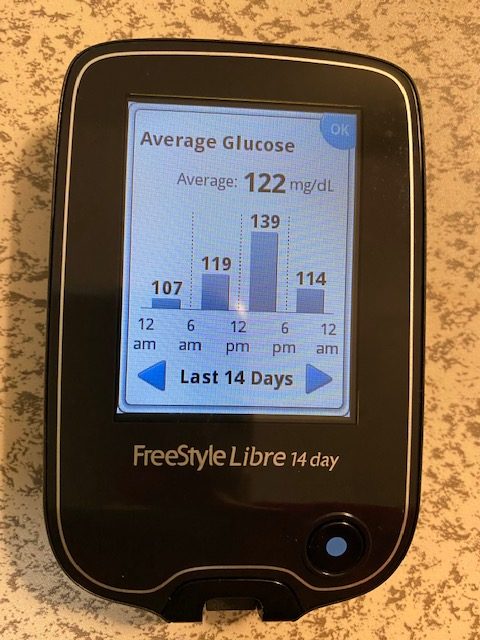
The doctor’s exam room can be an intimidating place when you’re sitting there in your hospital gown, all drafty in the back and all. Sometimes just getting the feel for the sound of all those lab tests and what they might mean, may make the experience less overwhelming.
Today I go over several different groups, or panels, which screen your blood for signs of any problems.
Here are the cliff notes, if you want to see the numbers in writing:
fasting blood sugar (FBS): 65 – 100 is normal. You may also see 110 as an upper limit of normal.
Random blood sugar (RBS): 100 – 140. You may also see 160 as an upper limit of normal. If you have diabetes, 180 might be considered normal for you.
Hemoglobin A1C (also called glycosylated hemoglobin): 4.3 – 6.1 is normal. If you are diabetic, up to 7.0 might be considered normal for you.
All pregnant women should undergo a glucose tolerance test at around 24 weeks gestation. Abnormally high glucose levels should be treated aggressively.
Symptoms of low blood sugar include clamminess, shakiness, rapid heartbeat, anxiety, and eventually (if on insulin) even coma.
Symptoms of high blood sugar include increased thirst, frequent urination, extreme fatigue, weight loss, blurred vision, trouble concentrating, and severe headaches.
Urinalysis: sugar should be negative (if positive, your doctor will definitely check for diabetes and probably a UTI).
Protein should be negative. Positive protein could imply a problem with your kidneys.
Ketones should be negative. The urine should be clear. Cloudy urine could mean infection and amber color urine could mean severe dehydration.
A Chem 20 or metabolic panel includes:
potassium: 3.6 – 5.1.
Sodium: 136 – 145
chloride: 98 – 107
if threes 3 are high, you could simply be dehydrated. If they are extremely high, that could signal a possible kidney problem.
Carbon dioxide: less than 32. This measures how well your lungs are expelling air.
Blood urea nitrogen (BUN): less than 20
Creatinine: less than 1.1. This could go as high as 6.0, which might signal acute kidney disease.
Albumin: 3.5 – 5.2. Low indicates a sign of malnutrition. High values may mean kidney dysfunction, so your Dr. will look at other labs for more information.
Calcium: 8.9 – 10.3
Alkaline phosphatase (ALT): 10 – 35. This is a liver function test.
A CBC panel tests for infection. The most common value is: White blood cell count (WBC): 4 – 11. A sign of infection if high. A high MCV may mean you have large but too few of those Iron-containing cells. Your doctor will look into a deficiency of active vitamin B12. this is called pernicious anemia. A low MCV may be a sign of iron deficiency anemia.
lipid panel:
total cholesterol: less than 200 (closer to 150 is ideal)
HDL: 40 – 60
LDL: less than 90
LDL/HDL ratio: less than 5.1 Triglycerides: 150 or less (this will be high with diabetes)
As always, if you have any specific questions about any nutrition-related lab tests, feel free to contact me on my contact page, on my Healing outside the box.com website.
